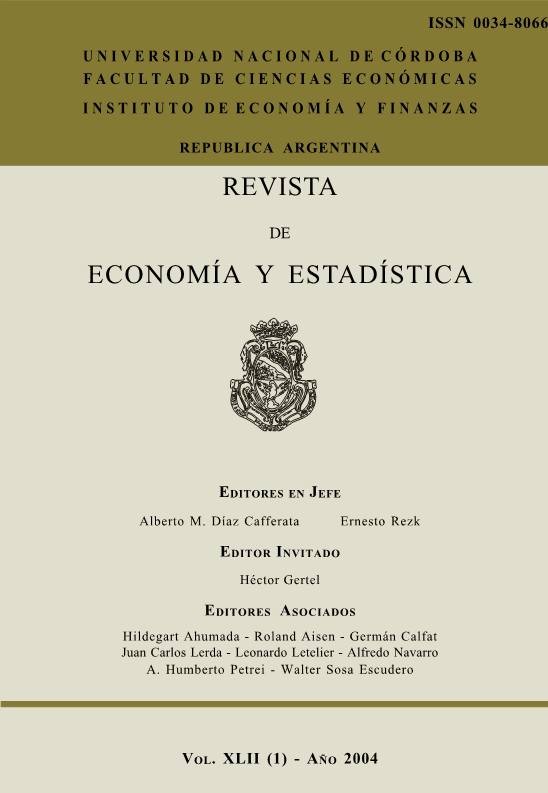Changes in the income differentiation of the population of Greater Cordoba between 1992 and 2000 according to gender and level of schooling
DOI:
https://doi.org/10.55444/2451.7321.2004.v42.n1.3801Keywords:
population, incomes, gender, level of education, Greater CordobaAbstract
The objective of this research is to study the contribution of differentiation by years of education and gender in determining inequality in personal income distribution. The perspective adopted is based, on the one hand, on the calculation of the economic distance, or relative degree of affluence, that occurs between groups of individuals categorized by gender and by the average years of schooling attained; and, on the other hand, on the analysis of the recent evolution of this distance computed for the population of Argentina differentiated by these attributes, considering, in particular, the role played by the expansion in access to Higher Education observed during the last few years.
Downloads
Downloads
Published
Issue
Section
License
Copyright (c) 2004 Héctor R. Gertel, Roberto F. Giuliodori, Alejandro Rodríguez

This work is licensed under a Creative Commons Attribution-NonCommercial-NoDerivatives 4.0 International License.
Authors who have publications with this journal agree to the following terms:
Authors retain their copyright and grant the journal the right of first publication of their work, which is simultaneously subject to the Creative Commons Attribution-NonCommercial-NoDerivatives 4.0 International License that allows third parties to share the work provided that its author and first publication in this journal are indicated.
Authors may adopt other non-exclusive licensing arrangements for distribution of the published version of the work (e.g. depositing it in an institutional telematic archive or publishing it in a monographic volume) as long as the initial publication in this journal is indicated.
Authors are allowed and encouraged to disseminate their work via the Internet (e.g. in institutional telematic archives or on their website) before and during the submission process, which can lead to interesting exchanges and increase citations of the published work. (See The Open Access Effect)










